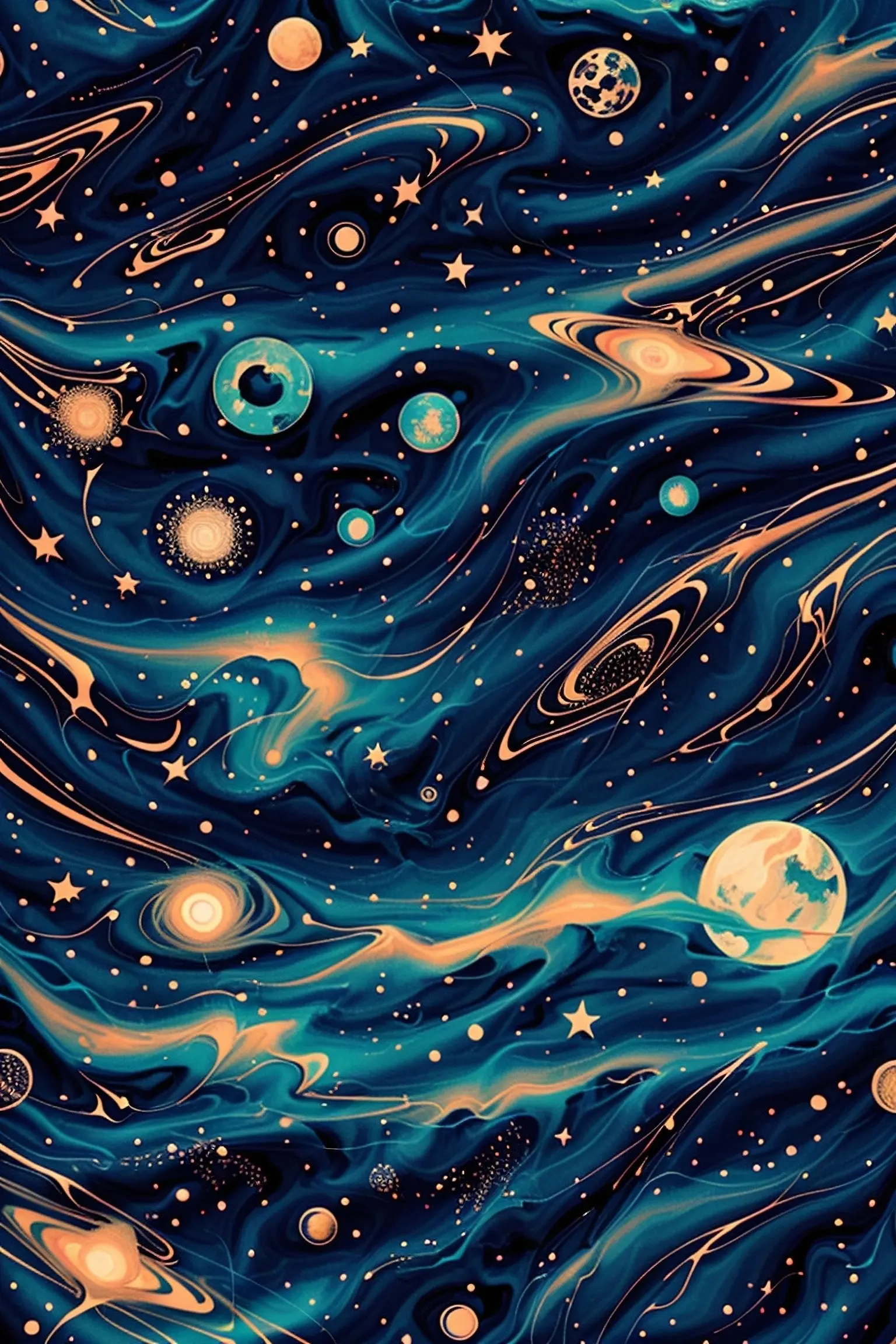Table of Contents
Ever wondered how Hollywood manages to transport us to galaxies far, far away with such mesmerizing accuracy? Well, it turns out that behind the scenes, star maps play a significant role in shaping the cosmic landscapes we witness on the silver screen. From the iconic Millennium Falcon navigating through the stars in Star Wars to the futuristic spacecraft in Interstellar, stellar charts have become indispensable tools for filmmakers weaving captivating sci-fi tales.
So grab your telescopes and get ready to explore how these celestial guides have guided Hollywood’s imagination and brought the wonders of the universe to our screens.
Brief Overview of Star Maps and Stellar Charts
- Star maps and stellar charts serve as graphical representations of the night sky, mapping out the positions and trajectories of stars and celestial objects.
- These charts have been used for centuries to aid in celestial navigation, allowing sailors, astronomers, and explorers to determine their position and navigate through the vastness of space.
- Star maps can vary in complexity, ranging from basic charts showing major constellations to more detailed maps that include precise coordinates and star magnitudes.
- In the context of popular culture, especially within the realm of science fiction films, star maps play a significant role in creating immersive and believable fictional universes.
- These maps are often utilized as tools for world-building, providing a visual representation of the planets, star systems, and interstellar travel routes within the film’s narrative.
- Additionally, star maps help to establish the setting and scale of the fictional universe, conveying a sense of vastness and wonder that captivates audiences.
- The use of star maps in sci-fi films extends beyond their visual appeal; they also serve as plot devices, driving the story forward and enabling characters to navigate through space.
- Often, star maps are portrayed as advanced technology or navigation systems that allow characters to travel between different star systems, planets, or even parallel dimensions.
- Through the use of star maps, filmmakers can depict the exploration of unknown realms, the quest for distant planets, and the discovery of new civilizations, which adds excitement and adventure to the storyline.
- In some cases, star maps serve as valuable clues or treasures within the film’s universe, creating a sense of mystery and intrigue that propels the plot forward.
- Although star maps in sci-fi films are primarily intended for entertainment purposes, they can also inspire real-world advancements in astronomy and space exploration, encouraging scientific research and technological innovations.
- It is important to recognize that while star maps in sci-fi films enhance the storytelling experience, they may not always adhere to scientific accuracy or plausibility, as they are often simplified or exaggerated to fit within the constraints of the fictional narrative.
Want Stellar Charts & Star Maps For Yourself?
With advance AI and other proprietary algorithms alongside star catalogues we are able to chart star alignments for moments in the past as well as the future. With so much science, yet there is something magical about the stars and how they engulf us in utter awe by speaking the language of the universe!
The Role of Star Maps in Sci-Fi Films
Enhancing the Setting and Creating the Universe
“Enhancing the Setting and Creating the Universe”:
- Setting the Tone: Star maps are essential in sci-fi films for creating a sense of place and immersing viewers in a futuristic world.
- Visual Spectacle: Stellar charts serve as visually stunning backdrops, with intricate constellations and galaxies, adding depth and realism to the sci-fi universe.
- Establishing Scale: By incorporating realistic star maps, filmmakers can effectively convey the vastness of space and the enormity of interstellar travel.
- Alien Worlds: Star maps help in depicting alien planets and their unique celestial features, contributing to the creation of diverse and captivating extraterrestrial environments.
- Time and Space: Stellar charts also aid in showcasing the relationship between time and space, allowing viewers to grasp the concept of interstellar distances and the challenges associated with space exploration.
- Fostering Believability: Accurate star maps lend credibility to the sci-fi narrative, making the fictional universe more believable and enhancing the overall cinematic experience.
Plot Development and Exploration
- Plot Development: Star maps play a crucial role in advancing the plot of sci-fi films. They serve as navigational tools for characters, guiding them on their interstellar journeys and helping them discover new worlds and civilizations. These maps often hold clues or information that propel the story forward, serving as key plot devices.
- Exploration: Star maps also aid in creating a sense of exploration and discovery within the film. Characters use these maps to chart unknown territories, plan their routes, and uncover hidden secrets of the universe. The exploration aspect adds depth to the narrative, allowing audiences to journey alongside the characters and experience the excitement of venturing into the unknown. Through the use of stellar charts, sci-fi films can showcase the vastness of space and the limitless possibilities that exist beyond our own planet.
Portrayal of Advanced Technology and Navigation Systems
- Advanced technology: Sci-fi films often incorporate star maps to showcase futuristic and advanced technology. These maps are typically depicted as holographic or digital projections, displaying intricate constellations and planetary systems. This use of technology creates a visually captivating experience for the audience and emphasizes humanity’s progression in space exploration.
- Navigation systems: Star maps play a crucial role in sci-fi films by representing navigation systems that guide spaceships and interstellar travel. These maps provide essential information about celestial bodies, their locations, and potential routes for spacecraft to navigate through the vastness of space. By incorporating star maps, filmmakers enhance the believability and immersion of the sci-fi universe while also emphasizing the importance of accurate stellar navigation for successful space journeys.
- Interaction and manipulation: In some films, characters interact with the star maps directly, using advanced technology to manipulate and analyze the displayed information. This portrayal highlights the seamless integration of human-machine interfaces and the ability to access comprehensive data about the universe effortlessly. The use of gestures or voice commands to interact with star maps adds a futuristic touch and emphasizes the reliance on advanced technology for space exploration.
- Real-time updates and data analysis: Star maps in sci-fi films often display real-time updates and allow characters to analyze data on the fly. Spaceships and navigation systems can detect obstacles, plot efficient routes, and calculate potential risks or opportunities using these dynamic maps. This portrayal presents the notion that technology has advanced to the point where star maps provide instantaneous and accurate information, aiding in decision-making and ensuring the safety of interstellar travel.
By portraying advanced technology and navigation systems through star maps, sci-fi films amplify the sense of wonder and technological progress, helping to create immersive and visually captivating fictional universes.
Shop Your Own Star Maps
-

Heritage Echo Tote Bag
$6.92 -

Alag Tote Bag
$6.92 -

Mein Tote Bag
$6.92 -

Bougainvillea Tote Bag
$6.92 -

Palestine Tote Bag
$6.92
Famous Examples of Star Maps in Sci-Fi Films
“Star Wars” Franchise
- The immensely popular “Star Wars” franchise is renowned for its depiction of a vast galaxy filled with diverse planets and civilizations.
- The use of star maps, particularly the Galactic Map, plays a crucial role in establishing the interconnectedness and scope of this fictional universe.
- These maps aid in showcasing the characters’ journeys between different star systems and planets and provide a sense of direction and purpose.
- Navigating through hyperspace using these maps allows characters to travel faster-than-light, allowing for epic space battles and interstellar adventures.
- The “Star Wars” franchise has transformed star maps into iconic symbols, fostering a sense of wonder and exploration among its dedicated fanbase.
The Use of the Galactic Map
“The Use of the Galactic Map” explores how star maps are employed in the “Star Wars” franchise to navigate the vast universe. The galactic map serves as a crucial tool for characters to chart their course through space, locate planets and systems, and plan their interstellar travels.
In the “Star Wars” universe, the galactic map is a comprehensive chart that displays thousands of star systems, hyperspace routes, and celestial bodies. It enables characters to plot the best course for their spaceships, avoiding obstacles and dangers along the way. The map helps them identify key locations, such as the Death Star, Rebel bases, or planets with valuable resources.
Characters in “Star Wars” use the galactic map in various capacities. Rebel pilots consult the map before embarking on missions to strategize their approach and coordinate with their allies. Smugglers and bounty hunters utilize it to plan efficient routes and evade authorities. Jedi and Sith navigate the map to locate ancient temples or powerful Force-sensitive planets.
The galactic map also serves as a visual representation of the vastness of the “Star Wars” universe. It showcases the multitude of interconnected star systems and the intricate network of hyperspace lanes. This grand visualization enhances the sense of scale and adventure, immersing the audience in the cosmic journey.
With the galactic map, “Star Wars” effectively incorporates stellar chart features to heighten the narrative and facilitate space exploration. By presenting a detailed cosmic geography, it enables characters and audiences alike to better comprehend and engage with the fictional universe.
Navigating Hyperspace
- Hyperspace refers to a fictional concept in sci-fi films where spacecraft can travel faster than the speed of light by entering an alternate dimension or “subspace.”.
- When navigating hyperspace, star maps play a crucial role in guiding spaceships on their interstellar journeys.
- Star maps in this context are used to plot courses, establish routes, and avoid potential hazards or obstacles within the hyperspace realm.
- They provide a visual representation of the celestial objects, such as stars, planets, and nebulae, and their spatial positions in relation to each other.
- These maps also incorporate hypothetical structures like hyperspace lanes or wormholes that allow for faster travel between distant regions of the universe.
- By referencing star maps, spaceship navigators can calculate the optimal routes through hyperspace, ensuring efficient interstellar travel.
- Star maps in navigating hyperspace may also include additional details, such as gravitational fields, energy fluctuations, or dangerous anomalies that need to be avoided.
- In some cases, the precision and accuracy of star maps become vital in preventing collisions with celestial objects or navigating through treacherous areas of space.
- While the concept of navigating hyperspace is purely fictional, it adds an element of excitement and adventure to sci-fi films, enhancing the sense of exploration and expanding the possibilities of interstellar travel.
Know your star signature today!
With advance AI and other proprietary algorithms alongside star catalogues we are able to chart star alignments for moments in the past as well as the future. With so much science, yet there is something magical about the stars and how they engulf us in utter awe by speaking the language of the universe!
Journey to Different Planets
“Guardians of the Galaxy“
“Guardians of the Galaxy” is a sci-fi action-comedy film set in the Marvel Cinematic Universe. Here are some key points about the movie:
- Diverse Team: The film revolves around a group of misfits who come together to form the Guardians of the Galaxy. The team consists of Peter Quill (Star-Lord), Gamora, Drax the Destroyer, Rocket Raccoon, and Groot.
- Unique Characters: Each character brings a distinctive personality and skills to the team. Peter Quill is a witty and resourceful thief with a mysterious past. Gamora is an assassin seeking redemption. Drax is fueled by vengeance and possesses immense strength. Rocket Raccoon is a genetically enhanced raccoon with masterful weapons skills, and Groot is a humanoid tree with the ability to regenerate.
- Space Adventures: The Guardians embark on a series of space adventures, battling villains and saving the galaxy. They encounter interstellar conflicts, cosmic dangers, and ancient artifacts, all while maintaining a humorous tone.
- Intergalactic Threat: The main antagonist is Ronan the Accuser, a power-hungry Kree zealot who seeks to obtain an Infinity Stone, a powerful artifact that grants immense power. Ronan’s destructive plans endanger the galaxy, and the Guardians must stop him to save countless lives.
- Unlikely Friendships: The film explores the development of unlikely friendships and a sense of camaraderie among the Guardians. Their initially selfish motives evolve into a genuine bond, and they realize the importance of teamwork and sacrifice to accomplish their mission.
- Quirky Humor and Soundtrack: “Guardians of the Galaxy” is renowned for its witty dialogue, offbeat humor, and a catchy soundtrack comprising popular music from the 70s and 80s. The film blends action with comedic moments, providing an entertaining and unique cinematic experience.
- Expansion of the MCU: The movie expands the Marvel Cinematic Universe by introducing cosmic elements and setting the stage for future space-centric stories.
It adds depth and diversity to the MCU, broadening the scope of the superhero franchise.
Overall, “Guardians of the Galaxy” is a visually stunning and entertaining space adventure that combines action, humor, and the power of friendship to create a memorable film in the Marvel universe.
The Celestial Map and the Quest for Power
“The Celestial Map and the Quest for Power” explores how star maps are used to depict power struggles and quests for dominance in sci-fi films. In this context, a celestial map refers to a stellar chart that reveals the locations of significant celestial bodies, planets, star systems, or even hidden treasures.
These maps serve as plot devices, driving characters to search for and obtain the map in order to gain a strategic advantage, control over resources, or even ultimate power. The possession of the celestial map becomes a coveted object, leading to intense rivalries and high-stakes conflicts.
Through the use of the celestial map, characters embark on epic journeys across galaxies, encountering various challenges and obstacles along the way. The map serves as a guide, helping them navigate through unknown territories, uncharted planets, or dangerous sectors of space.
In some instances, the map holds the key to unlocking untold secrets, ancient legends, or hidden knowledge that can alter the balance of power in the universe. It becomes a symbol of authority, as those who possess it gain an upper hand in their pursuit of dominance.
However, the celestial map is not always a straightforward path to power. Its authenticity, accuracy, or even its potential deception can add layers of complexity to the plot. Characters must decipher cryptic symbols or solve riddles encoded within the map to unlock its full potential or uncover hidden risks.
The quest for power depicted through the celestial map is often accompanied by moral dilemmas and ethical choices. Characters must confront the consequences of their actions and decide whether the pursuit of power is worth the sacrifices or if there are greater responsibilities that come with such knowledge.
Overall, the celestial map as a narrative device in sci-fi films adds depth and intrigue to the storyline, unearthing themes of ambition, exploration, discovery, and the consequences of unchecked power.
Spatial Navigation through the Cosmos
“Spatial Navigation through the Cosmos” refers to the depiction of how characters in sci-fi films navigate through vast interstellar distances. It involves the use of star maps and stellar charts to plot courses, determine routes, and locate specific destinations in the cosmos. By utilizing these charts, characters are able to maneuver their spacecraft through space, avoiding obstacles such as asteroids, black holes, or enemy territories.
In the context of sci-fi films, spatial navigation is often depicted as a complex process that requires advanced technology and expertise. Characters utilize the star maps to calculate trajectories, identify gravitational fields, and plot efficient paths for interplanetary travel. These charts play a crucial role in guiding spaceships through the vastness of space, enabling characters to reach distant galaxies, explore uncharted territories, or engage in interstellar battles.
Stellar charts not only assist characters in reaching their intended destinations but also contribute to the overall immersive experience of the film. The intricate details and visual representations of these charts help create a sense of realism and make the audience feel like they are part of the cosmic journey. Whether it’s the use of holographic projections or futuristic computer interfaces, the portrayal of spatial navigation through the cosmos adds depth and richness to the sci-fi film narrative.
Moreover, spatial navigation through star maps allows filmmakers to showcase the wonders and vastness of the universe. It presents the audience with a glimpse into the magnitude of celestial bodies, star systems, and galaxies, igniting a sense of awe and curiosity. By integrating spatial navigation into the narrative, sci-fi films can explore new environments, encounter alien civilizations, and uncover the mysteries of the cosmos.
Overall, the depiction of spatial navigation through the cosmos in sci-fi films, enabled by star maps and stellar charts, serves not only as a plot device but also as a visual tool to transport audiences into a future where space exploration and intergalactic travel are a reality.
-
 Heritage Echo Tote Bag$6.92
Heritage Echo Tote Bag$6.92 -
 Mein Tote Bag$6.92
Mein Tote Bag$6.92 -
 Khwab Tote Bag$6.92
Khwab Tote Bag$6.92 -
 Mountain Whispers Journal$4.09
Mountain Whispers Journal$4.09
Utilizing Maps as Clues and Treasures
“Interstellar“
“Interstellar,” directed by Christopher Nolan, is a thought-provoking sci-fi film that takes viewers on an incredible journey across the cosmos. The movie revolves around a near-future Earth facing an environmental crisis and a mission to find a habitable planet for humanity’s survival.
The story follows ex-NASA pilot Joseph Cooper, played by Matthew McConaughey, who embarks on a daring voyage through a wormhole in search of a new home for mankind. The film delves into complex scientific concepts such as black holes, time dilation, and interstellar travel, while also exploring the emotional bonds between characters.
As Cooper and his team venture into the unknown, they encounter mind-bending phenomena and confront the fragility of human existence. The film masterfully blends elements of personal sacrifice, love, and the sheer vastness of the universe to craft a captivating narrative.
The portrayal of wormholes, which are hypothetical shortcuts through space-time, is a central theme in “Interstellar.” The film delves into the theories of renowned physicist Kip Thorne to provide a visually stunning representation of these cosmic anomalies. By showcasing the visual spectacle and gravitational distortions, “Interstellar” offers audiences a glimpse into the awe-inspiring nature of these cosmic phenomena.
The exploration of time dilation further adds to the film’s complexity. As the crew ventures closer to massive gravitational forces, time passes at different rates. This concept presents profound implications for both the characters and the narrative, as years and decades elapse on Earth while only hours or minutes pass for the astronauts.
Additionally, “Interstellar” delves into the emotional toll of space travel and the significance of personal connections. The bond between Cooper and his daughter Murph, played by Mackenzie Foy and later Jessica Chastain, is a driving force throughout the film. Their intertwined destinies highlight the profound impacts of love and sacrifice in the face of seemingly insurmountable challenges.
Overall, “Interstellar” is a visually stunning and intellectually stimulating film that explores the mysteries of space while tapping into the depths of human emotion. Through its thought-provoking storyline and impressive visuals, the movie leaves a lasting impression on viewers while sparking discussions about humanity’s place in the vastness of the universe.
Understanding Wormholes and Interstellar Travel
Wormholes are hypothetical tunnels that connect different points in spacetime, allowing for quick travel between far-off locations in the universe. In the realm of science fiction, these cosmic shortcuts have been a popular plot device, especially in films depicting interstellar travel.
Wormholes are typically portrayed as passageways through spacetime, creating a shortcut that bypasses the traditional constraints of distance and time. By entering one end of the wormhole, characters in sci-fi films can emerge in another part of the universe almost instantly, effectively making vast interstellar journeys feasible within a single lifetime.
In films like “Interstellar,” wormholes are used to enable space explorers to reach distant planets that would otherwise be unreachable given the limitations of conventional propulsion systems. These films often delve into the scientific concepts surrounding wormholes, including the curvature of spacetime and the potential existence of exotic matter to stabilize the wormhole’s structure.
While the depiction of wormholes in movies may take artistic liberties for dramatic effect, the general notion of these cosmic shortcuts has captured the imagination of audiences worldwide. The possibility of traversing immense distances in the blink of an eye creates a sense of wonder and adventure, sparking discussions on the potential future of interstellar travel.
However, it is important to note that the scientific understanding of wormholes is purely theoretical at this point. The existence of stable, traversable wormholes, and the ability to control and navigate them, remains uncertain and heavily debated among physicists. Despite their popularity in sci-fi films, actual scientific research on wormholes is ongoing and primarily focused on exploring the intricacies of general relativity and the nature of spacetime.
In summary, the portrayal of wormholes in sci-fi films serves as a captivating concept that stimulates interest and speculation surrounding interstellar travel. While their actual existence and feasibility are still subjects of scientific inquiry, the depiction of wormholes in popular culture continues to inspire scientific curiosity and fuel the imagination of both filmmakers and audiences alike.
Utilizing Stellar Charts for Interplanetary Exploration
Interplanetary exploration in science fiction films often relies on the use of stellar charts as crucial tools for navigation. These charts provide a comprehensive visual representation of the stars, planets, and other celestial objects within a given galaxy or universe.
Stellar charts assist spacecraft crews in plotting their routes, identifying potential hazards, and determining the most efficient paths for interplanetary travel. By analyzing the positions, distances, and trajectories of celestial bodies, astronauts can plan their journeys more effectively, ensuring they reach their desired destinations with precision.
These charts also play a significant role in calculating the duration of space trips and estimating the availability of resources along the way. Information provided by stellar charts helps explorers gauge the feasibility of interplanetary missions, guiding them on the most viable routes that minimize fuel consumption and reduce travel time.
Additionally, stellar charts aid in finding habitable planets or potential sites for scientific research. By mapping known star systems and identifying planets within the habitable zone, exploratory missions can focus their efforts on discovering new worlds capable of sustaining human life or supporting scientific investigations.
However, it’s important to note that while stellar charts are valuable tools in science fiction films, their portrayal may not always align with reality. In real-life interplanetary exploration, astronomers rely on sophisticated telescopes, probes, and astronomical data to map the cosmos accurately. Nonetheless, the concept of utilizing stellar charts for interplanetary exploration adds depth and believability to the sci-fi narrative, enhancing the viewer’s immersion in the fictional universe.
Get an authentic real life star map today!
With advance AI and other proprietary algorithms alongside star catalogues we are able to chart star alignments for moments in the past as well as the future. With so much science, yet there is something magical about the stars and how they engulf us in utter awe by speaking the language of the universe!
Space-Time Distortions and Celestial Mapping
In the realm of sci-fi films, the concept of space-time distortions and celestial mapping plays a vital role in creating intriguing narratives and mind-bending adventures. Here’s a detailed explanation of this fascinating element:
- Understanding Space-Time Distortions:
- Space-time distortions refer to the alteration of the fabric of space and time, often depicted in sci-fi films to enable faster-than-light travel or time travel.
- These distortions present opportunities for characters to traverse vast distances in the universe or venture into different time periods.
- By utilizing celestial mapping, characters can navigate these distortions and plot their courses through the cosmos.
- Celestial Mapping and Interstellar Travel:
- Celestial mapping involves creating detailed charts and visual representations of celestial bodies, star systems, and the relationships between them.
- In sci-fi films, celestial maps aid spaceships in plotting the most efficient routes across vast interstellar distances.
- By accurately mapping cosmic features, characters can locate and exploit navigational shortcuts, like wormholes, which dramatically reduce travel time.
- Wormholes as Comic Passageways:
- Wormholes are hypothetical tunnels that connect distant points in space-time, potentially allowing rapid travel between them.
- Films utilize celestial mapping to illustrate the strategic positioning of wormholes and chart routes that utilize these shortcuts.
- By incorporating wormholes into celestial maps, characters can quickly access distant corners of the universe or even leap across different dimensions.
- Impact on Celestial Exploration:
- Celestial mapping not only serves as a practical tool for characters within the film’s narrative but also influences real-life astronomy and space exploration.
- These sci-fi depictions inspire scientists to study and understand celestial bodies and phenomena more deeply, often leading to new discoveries and advancements.
- The concept of space-time distortions, as portrayed in films, sparks discussions within the scientific community on the possibilities and consequences of faster-than-light travel and time manipulation.
- Limitations and Challenges:
- While space-time distortions and celestial mapping provide exciting storytelling opportunities, there are limitations and challenges to consider.
- Scientific accuracy and plausibility may be compromised for the sake of entertainment value, as certain elements may be exaggerated or simplified.
- It is crucial to balance the creative liberties taken with scientific concepts, ensuring that they remain true enough to retain a compelling storyline while not straying too far from scientific principles.
In summary, space-time distortions and celestial mapping in sci-fi films offer a captivating framework for adventures across the cosmos. By understanding these concepts, characters can navigate vast distances, explore new worlds, and embark on thrilling quests, while inspiring audiences to ponder the mysteries of our universe.
Impact on Real-Life Astronomy and Space Exploration
Technology Inspired by Sci-Fi Star Maps
Over the years, science fiction films have not only entertained us with their captivating narratives but also inspired real-world technology advancements. When it comes to star maps in particular, these fictional representations of celestial navigation have had a notable impact on the development of certain technologies.
One area where sci-fi star maps have influenced technology is in the field of augmented reality (AR) and virtual reality (VR). Inspired by the way futuristic characters interact with holographic star maps in films, developers have created AR and VR applications that allow users to explore and navigate virtual environments using stellar charts. By overlaying digital celestial maps onto the real world or immersing users in a virtual universe, these technologies enhance the user experience and provide a unique way to interact with spatial data.
Furthermore, the concept of advanced navigation systems depicted in sci-fi films has spurred innovation in the field of global positioning systems (GPS). Real-world GPS technologies have evolved to include features such as 3D mapping, constellation tracking, and augmented reality overlays – all inspired by the fictional representations of stellar navigation in popular culture.
In addition, the visualization techniques used in sci-fi star maps have influenced the development of astronomical software and tools. Astronomical software now incorporates interactive star maps and three-dimensional representations of the cosmos, allowing researchers and enthusiasts to explore the night sky in unprecedented detail. These tools not only aid in astronomical research but also enhance public engagement and education by providing accessible and visually compelling representations of celestial objects and their positions.
It is important to note, however, that while sci-fi star maps have indeed inspired technological advancements, there are limitations to consider. Scientific accuracy and the need to simplify complex astronomical concepts for entertainment purposes can sometimes lead to discrepancies between fictional portrayals and real-world possibilities. Nevertheless, the impact of star maps in popular culture on technological innovation cannot be denied, as they continue to inspire scientists, engineers, and researchers to push the boundaries of what is possible in the realm of celestial navigation and exploration.
Stellar Cartography in Astronomical Research
Stellar cartography refers to the mapping and study of celestial objects and their positions in the universe. In astronomical research, stellar cartography plays a crucial role in understanding the structure, composition, and behavior of stars, galaxies, and other cosmic entities. Scientists use advanced telescopes, satellites, and computer models to create detailed star maps that help uncover hidden patterns, identify new celestial phenomena, and contribute to our knowledge of the cosmos.
These maps are essential for astronomers to navigate through space and investigate various astronomical phenomena, aiding in the exploration and understanding of the vast universe that surrounds us.
Utilizing Stellar Charts in Future Space Missions
- Implementing advanced technology: Future space missions can utilize stellar charts as navigation tools through the integration of advanced technology such as AI-powered spacecraft systems.
- Precision in interstellar travel: Stellar charts offer precise information on the position and trajectory of stars, galaxies, and celestial objects, enabling spacecraft to navigate accurately during long-distance interstellar travel.
- Optimizing spacecraft trajectories: Stellar charts help in optimizing flight paths by identifying gravitational assist opportunities, locating stable orbits, and avoiding potential obstacles or hazards.
- Mapping cosmic phenomena: By using stellar charts, future space missions can map cosmic phenomena such as black holes, pulsars, and dark matter, aiding scientific research and expanding our understanding of the universe.
- Identifying potential exoplanets: Stellar charts provide data on stars and their planetary systems, helping future missions identify potential exoplanets with conditions suitable for life or further exploration.
- Monitoring space debris: Stellar charts can track the movement of space debris, allowing space missions to navigate safely and avoid collisions during their journeys.
- Emergency navigation: In the event of system failures or unforeseen circumstances, stellar charts can serve as a backup navigation tool, providing essential information for astronauts to find their way back to Earth or reach a designated destination.
- Collaborative mapping efforts: Future space missions can collaborate and contribute to the continuous improvement of stellar charts by sharing data and observations, enhancing the accuracy and reliability of the charts for all space explorers.
GIFT AN AUTHENTIC STELLAR STAR CHART FOR CAPTURING A STELLAR MEMORY
With advance AI and other proprietary algorithms alongside star catalogues we are able to chart star alignments for moments in the past as well as the future. With so much science, yet there is something magical about the stars and how they engulf us in utter awe by speaking the language of the universe!
Criticism and Limitations of Star Maps in Sci-Fi Films
Scientific Accuracy and Plausibility
- Balancing Entertainment and Realism: Filmmakers often strive to strike a balance between creating an entertaining storyline and maintaining a level of scientific accuracy and plausibility.
- Depicting Realistic Stellar Phenomena: Sci-fi films incorporating star maps should ensure that the portrayal of celestial objects, such as stars, planets, and galaxies, aligns with our current understanding of astronomy and astrophysics.
- Considering Known Scientific Concepts: While sci-fi allows for creative interpretations of technology and space exploration, it is important to incorporate known scientific concepts, such as gravity, relativity, and the laws of physics, to maintain a sense of plausibility.
- Avoiding Unintended Misinformation: As star maps reach a wide audience, it is crucial that any scientific inaccuracies or fictional elements in their depiction do not inadvertently misinform viewers about our actual understanding of the universe.
- Seeking Expert Consultation: Filmmakers sometimes consult with scientists and experts in astronomy to ensure that the use of star maps in their films remains grounded in scientific accuracy. This collaboration helps enhance the overall credibility of the cinematic universe.
- Suspension of Disbelief: Despite the need for scientific accuracy, cinematic storytelling often involves a degree of suspension of disbelief, allowing viewers to immerse themselves in fantastical narratives without scrutinizing every detail against real-world scientific principles.
Simplification for Entertainment Purposes
“Simplification for Entertainment Purposes” is a sub-topic that delves into the way star maps are sometimes simplified in sci-fi films in order to cater to the entertainment value of the audience. In this section, we explore how stellar charts are condensed or streamlined to make the complex world of space travel more accessible and understandable to viewers. This can involve the removal of intricate astronomical details or the use of visual shortcuts to depict interstellar navigation.
By simplifying star maps, filmmakers aim to avoid overwhelming the audience with technical jargon or complex astrophysical concepts. They strive to strike a balance between scientific accuracy and creating an engaging cinematic experience. For instance, complex equations or calculations involved in interstellar travel might be omitted, and instead, simplified representations like glowing lines or easily recognizable constellations may be used to visually guide the characters through space.
While this approach allows for a smoother narrative flow and broad appeal, it raises concerns about the potential misrepresentation of scientific concepts. In reality, navigating through space is an intricate process that involves precise calculations and complex celestial mechanics. By simplifying these aspects, filmmakers prioritize storytelling over scientific accuracy, which can occasionally lead to inaccuracies or oversimplifications.
Nevertheless, it is important to note that the simplification of star maps in sci-fi films is ultimately a creative choice made to entertain audiences and drive the plot forward. Despite the simplifications, these visual representations still serve as a catalyst for our imagination and spark interest in real-world astronomy and space exploration.
Overuse or Misuse of Star Maps in Plotlines
While star maps serve as valuable storytelling tools, their excessive or incorrect utilization can sometimes lead to plot inconsistencies and gaps in logic. Filmmakers sometimes prioritize visual appeal over scientific accuracy, leading to the creation of fantastical or implausible star maps that may confuse or frustrate the audience. It is essential to strike a balance between artistic liberty and maintaining a coherent narrative that respects the basic principles of astronomy and astrophysics.
Conclusion
This article explored the influential role of star maps in science fiction films produced by Hollywood. With the increasing interest in space travel and exploration, filmmakers have utilized stellar charts to enhance the authenticity and visual appeal of their cinematic creations. By incorporating accurate celestial navigation systems, these movies not only portray the vastness of interstellar travel but also add an extra layer of believability to their narratives.
To achieve this, filmmakers collaborate with astronomers and astrophysicists, who provide them with detailed star maps and astronomical data. These charts serve as powerful tools in creating realistic and visually stunning cosmic environments. Directors and production designers use the precise positioning of stars, constellations, and galaxies to accurately depict space settings, ensuring that the audience feels immersed in the fantastical worlds portrayed on screen.
Furthermore, star maps play a vital role in developing futuristic narratives. They provide a reference point for creating complex alien civilizations and unique interstellar systems. By accurately positioning stars and mapping out their trajectories, filmmakers can design intricate spatial relationships between different planets, moons, and other celestial bodies. This attention to detail adds depth and coherence to the imagined universes, allowing viewers to suspend disbelief and fully engage with the storylines.
Star maps also contribute to the visual aesthetics of sci-fi films. The awe-inspiring beauty of the night sky depicted in these movies evokes a sense of wonder and curiosity. By incorporating actual star charts, filmmakers maintain a level of scientific accuracy, while also leveraging the ethereal qualities of celestial phenomena. These visual elements not only serve as breathtaking backdrops; they also evoke a sense of the unknown, reminding audiences of the infinite possibilities and mysteries that lie beyond our own planet.
In conclusion, star maps have become instrumental in creating realistic and captivating sci-fi films. Hollywood’s collaboration with astronomers and astrophysicists ensures that these maps accurately depict the vastness of space and contribute to the immersive experience for viewers. By incorporating stellar charts, filmmakers bring authenticity, believability, and aesthetic appeal to the cosmic landscapes and narratives they present on screen. As technology and our understanding of the universe progresses, it is likely that star maps will continue to play a significant role in shaping the depiction of space in popular culture.
GET YOUR AUTHENTIC CELESTIAL STAR MAP NOW
-
Heritage Echo Tote Bag
$6.92 -
Alag Tote Bag
$6.92 -
Mein Tote Bag
$6.92 -
Bougainvillea Tote Bag
$6.92















